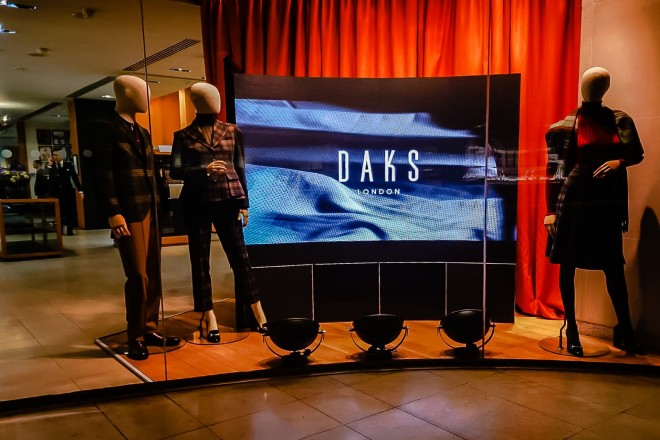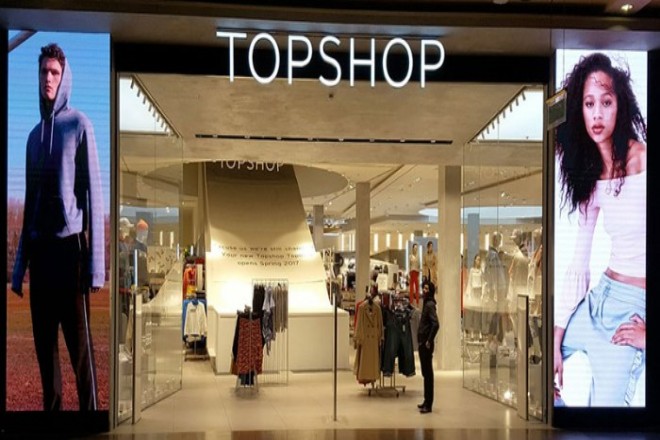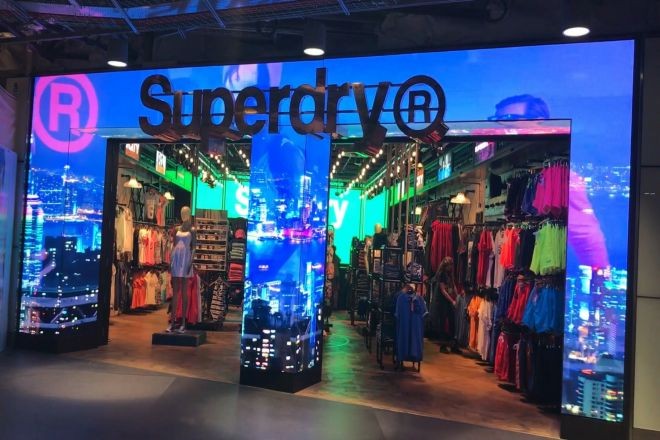序章

In the era of digital marketing, LEDディスプレイ have surpassed the traditional information display function and become a key tool for improving sales efficiency and customer interaction.
As a salesperson, how to cleverly use LED displays to enhance the attractiveness and sales power of products is a question worth exploring. This article will show you how to turn LED displays into an efficient sales partner.
1. Improve the visual appeal of LED displays
In this era of information explosion, LED displays are not only standard equipment for shopping malls, exhibitions, and event sites but also a bridge for communication between brands and consumers.
To stand out among these many LED displays, high-definition visual content and dynamic display effects are undoubtedly the two winning magic weapons.
1). High-definition visual content:
- Select “eye-catching” materials to create a visual feast
When you stroll into the mall, a high-definition product advertisement is played on an LED display. The delicate picture quality and rich colors will instantly attract your attention?
That’s right, the first step of high-definition visual content is to select pictures and videos that make people shine. Whether it is a close-up shot of the product or a true reproduction of the usage scene, make sure that every detail is clearly visible, the colors are full and real.
- Content planning:
High-definition visual content is not just about looking good; it also needs to tell the story of the brand and convey the value of the product. For example, you can tell a heartwarming story about how the product changes the lives of users through a series of carefully planned pictures and videos or show the unique charm of the product in different scenarios.
Such content not only allows the audience to have a deeper understanding of the product but also stimulates their emotional resonance, thereby enhancing the brand’s memory point.
- Visual guidance:
Visual guidance is equally important on LED displays. Through reasonable layout and color matching, you can guide the audience’s eyes to move in the direction you want, thereby highlighting the focus of the display.
For example, you can use contrasting colors to highlight a product feature or use animation effects to make static text or pictures “live,” which can not only attract the audience’s attention but also improve the efficiency of information transmission.
2). Dynamic display effect:
- Creative animation makes the content more vivid
The dynamic display effect is another powerful tool for LED displays to attract attention. If one screen plays static pictures and text, and the other screenplays vivid animation effects, which screen will you be attracted to?
I think it must be a dynamic one. Therefore, when planning the display content, you may wish to add some creative animation elements, such as 3D model display of products, dynamic data charts, etc., which can make the content more vivid and interesting.
- Real-time interaction to enhance participation
In addition to creative animation, real-time interaction is also the key to enhancing the attractiveness of LED display screens.
Through technologies such as touch screens and sensors, you can achieve interaction between the audience and the screen, such as allowing the audience to select the product information they want to know by touching the screen or participating in some interesting interactive games.
Such a design can not only enhance the audience’s sense of participation but also collect valuable user feedback, providing data support for subsequent display content optimization.
- Creative display form, breaking the routine
Finally, don’t forget to try some creative display forms to break the routine. For example, you can combine LED display screens with physical devices to create unique visual effects or use the splicing of LED screens to build special-shaped screen shapes so that the audience can get a new visual experience.
These creative display forms can not only attract the audience’s attention but also enhance the brand’s recognition and memory points.
2. Create customized content strategies

In today’s increasingly sophisticated digital marketing, customized content strategies have become a key link in enhancing the attractiveness of LED display screens.
1). Target market analysis:
- In-depth insight into the target market
The first step in developing a customized content strategy is to have a deep understanding of the characteristics of the target market. This includes basic information such as age, gender, occupation, income level, consumption habits, hobbies, and interests of the target customer group, as well as their expectations and needs for products or services.
Through market research, data analysis, and other means, we can obtain this key information to provide strong support for subsequent customized content planning.
- Ensure that the information matches customer needs.
After mastering the basic information of the target market, the next thing to do is to ensure that the content on the LED display matches customer needs.
This requires us to fully consider the interests, concerns, and purchase motivations of the target customers when planning the display content and ensure that the information can be accurately reached and resonate with and interest the customers.
For example, for young consumer groups, we can adopt a more fashionable and trendy display style, as well as product information and promotions that are closely related to their lifestyles.
2). Personalized information delivery:
- Use data to drive personalization
In the digital age, data has become an important tool for driving personalized marketing. By collecting and analyzing customer browsing history, purchase history, interest preferences, and other data, we can provide customers with personalized recommendations and services.
On the LED display, we can use this data to customize the display content, such as recommending similar products or promotions based on the customer’s purchase history or customizing personalized advertising copy and visual elements based on the customer’s interest preferences.
- Enhance the customer’s sense of exclusivity.
Another important purpose of personalized information delivery is to enhance the customer’s sense of exclusivity. Through the LED display, we can provide customers with customized welcome messages, birthday wishes, membership privileges and other information, so that customers can feel the attention and respect of the brand.
This sense of exclusivity can not only enhance customer loyalty, but also stimulate their willingness to buy and word-of-mouth communication.
- Creative execution, eye-catching
Of course, personalized information delivery does not only mean simple data matching and display. In terms of creative execution, we also need to pay attention to the presentation of visual effects and the design of interactive experiences.
For example, we can use the dynamic effects and interactive functions of LED displays to create a unique visual feast and interactive experience for customers. Through creative animation effects, vivid scene reproduction, and interesting interactive games, we can attract customers’ attention and improve their participation and satisfaction.
3. Optimize the information layout of LED display screens
1). Clear information hierarchy:
In the bustling commercial district, there are LED display screens in front of you, which are either dazzling or warm and moving. But what really attracts you to stop is often those screens with clear information hierarchy and clear at a glance. In information layout, you should pursue the ultimate sense of hierarchy.
Key sales information, such as new product launches and limited-time discounts, are like the protagonists on the ステージ, carefully arranged in a prominent position on the screen to ensure that every passing customer can catch it at a glance.
Non-critical information, such as brand stories and product features, is like elegant supporting roles, cleverly surrounding the protagonists and adding rich background and emotional colors to the overall display.
Through reasonable layout and visual design, guide the natural flow of customers’ sight, from key information to non-critical information and then to interactive links; every step is full of surprises and expectations. Such an information layout allows customers to enjoy a visual feast while also deeply feeling the charm and warmth of the brand.
2). Multi-language support:
In this era of globalization, language is no longer a barrier to communication, but a bridge connecting different cultures and markets. The display content of LED display can support multiple languages.
Such a design not only meets the needs of customers from different countries and regions, but also shows the brand’s respect and tolerance for the global market.
On the basis of multi-language support, we also focus on cultural integration and emotional resonance. Through carefully selected translations and localized designs, we allow each message to find resonance points in different cultural backgrounds, so that customers can feel the warmth and care of the brand while enjoying the fun of shopping.
4. Use the data of LED display for analysis

In today’s digital world, LED displays are not just places to display advertisements; they are more like a bridge for us to communicate with customers. By observing and analyzing the data on the LED display, we can better understand customers and improve sales performance.
1). See what customers are doing:
Dwelling time: If a customer stands in front of the LED display for a long time, it is likely that he/she is attracted by the displayed content. Therefore, we can judge which content is more popular based on how long the customer stays.
Interactive behavior: Did the customer click the button on the screen? Did he/she share a certain content? These interactive behaviors are their direct feedback to our content. By observing these behaviors, we can know which content customers are interested in and which content may need to be improved.
2). Sales data:
Sales and sales volume: The most direct way is to see if our sales and sales volume have increased after the LED display. If it has increased, it means that the LED display has played a role.
Conversion rate: The conversion rate refers to the ratio from seeing an ad to an actual purchase. If the conversion rate increases, it means that our advertising content or display method may be more attractive.
3). Use data to guide us to do what we do
Optimize content: Based on the customers’ stay time and interactive behavior, we can determine which content is popular and which is not. Then, we can adjust the content to make customers like it more.
Adjust the display strategy: If the sales volume in a certain period of time is particularly high, then we can show more ads in that period of time. Similarly, if the conversion rate in a certain location is particularly high, then we can also put a few more LED displays there.
Continuous monitoring: The data will change, so we need to continuously monitor the data of the LED display to see which strategies are effective and which ones need to be improved.
In general, the data of LED displays is like a mirror, which allows us to see the real needs and reactions of customers. By analyzing and applying this data, we can better understand customers and improve sales performance.
結論
LED display has great potential in the field of sales. It can not only attract customers’ attention but also enhance customer experience through interactive and personalized content, thereby promoting sales.
Through the discussion in this article, we can see that through careful content planning, technological innovation, and customer insights, LED displays can become an important tool in the hands of sales staff.
最後に、LEDディスプレイについてもっと知りたい方は、 ご連絡ください。
